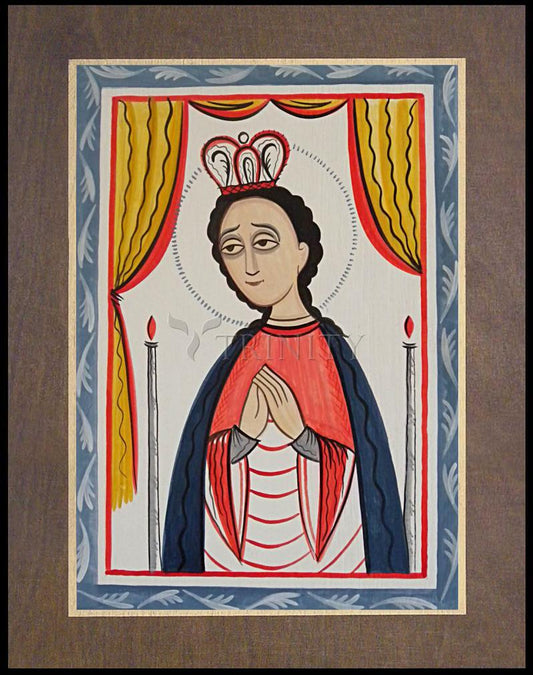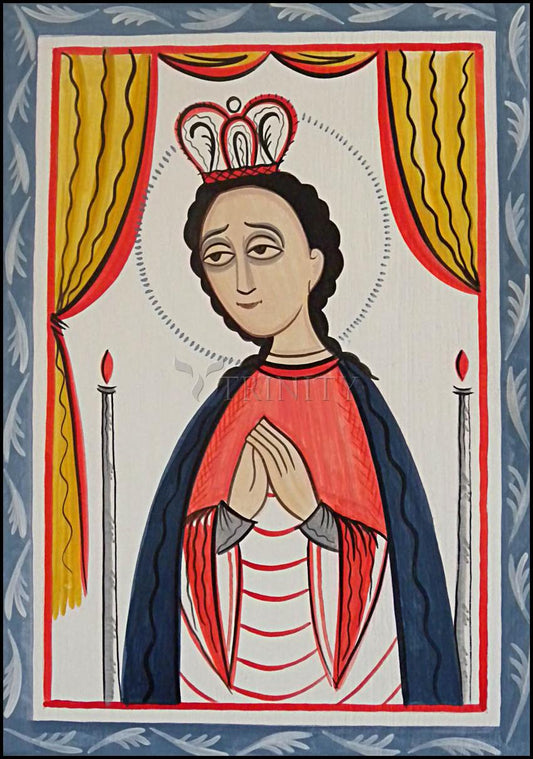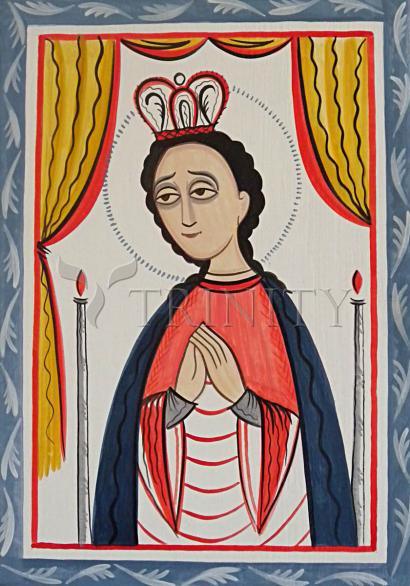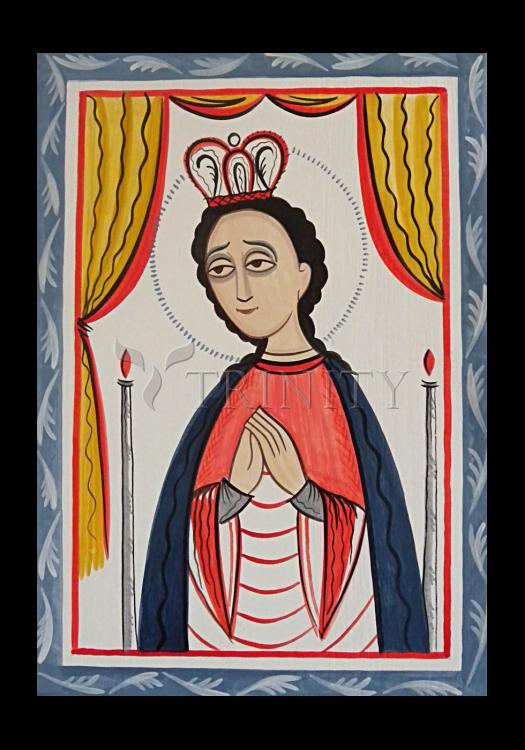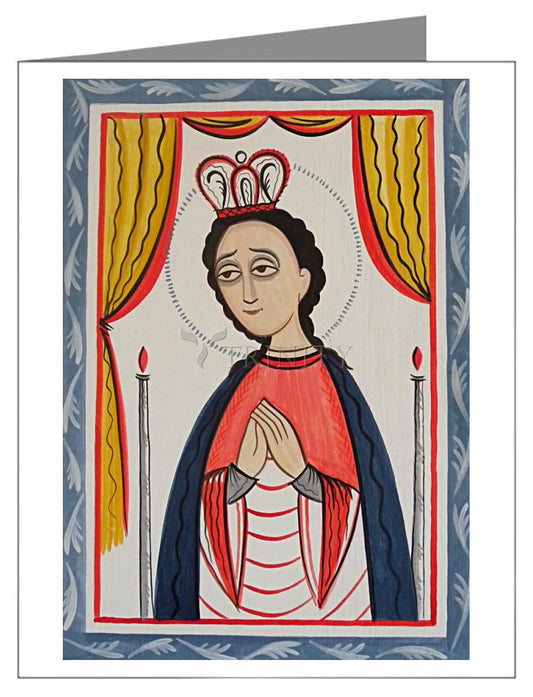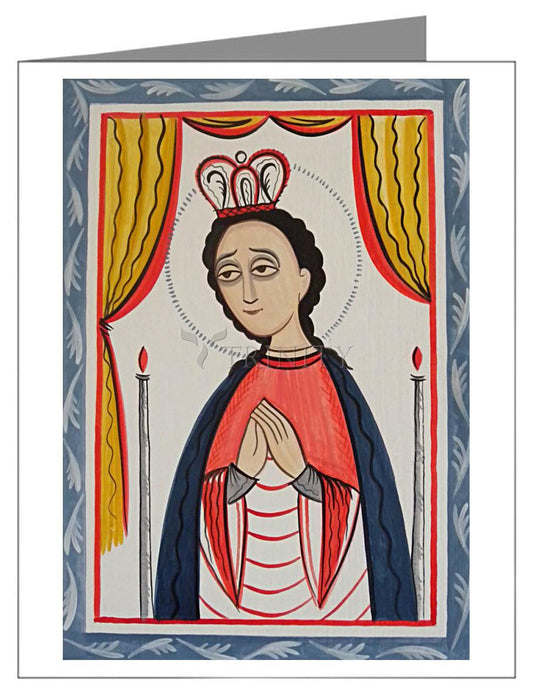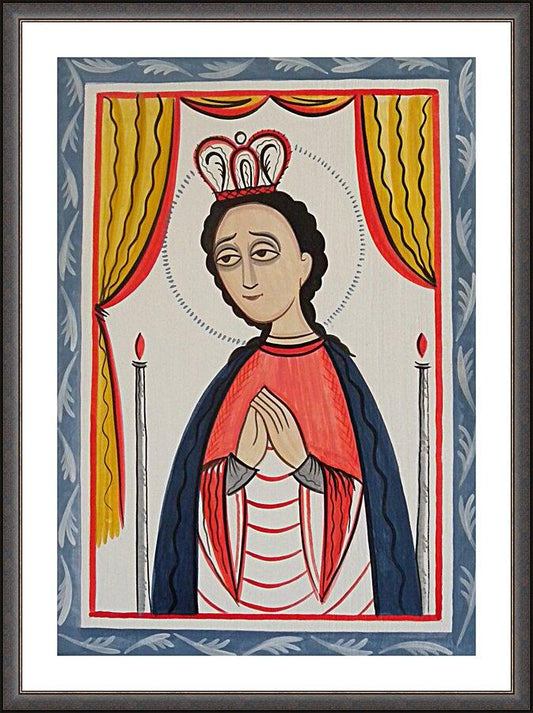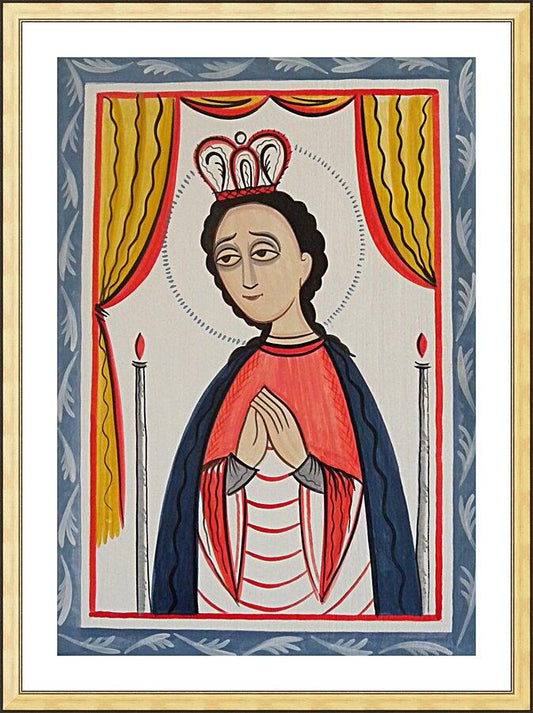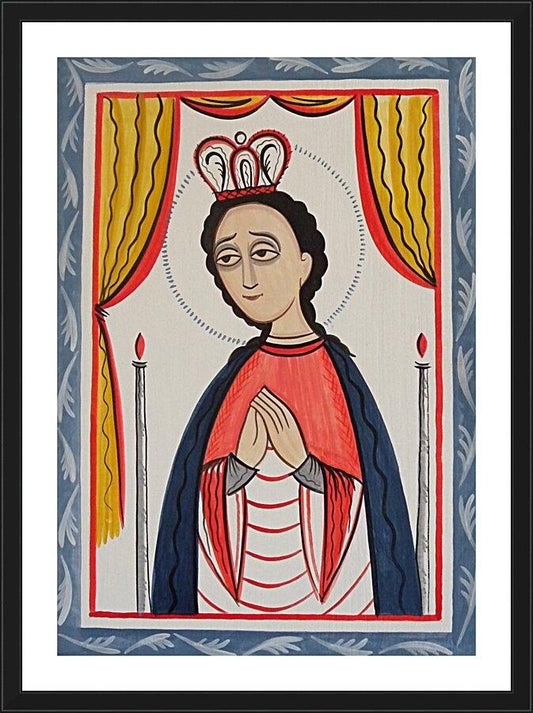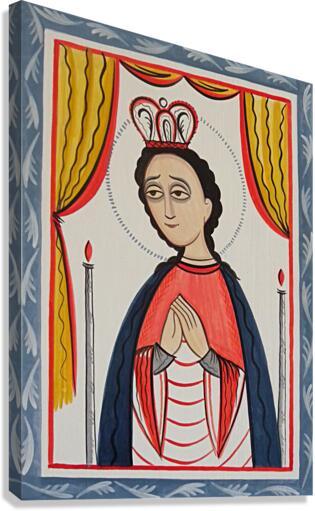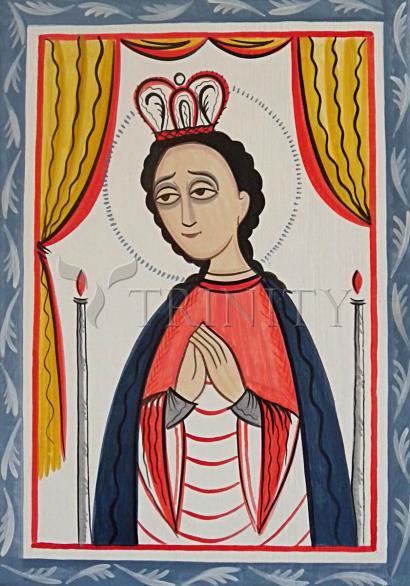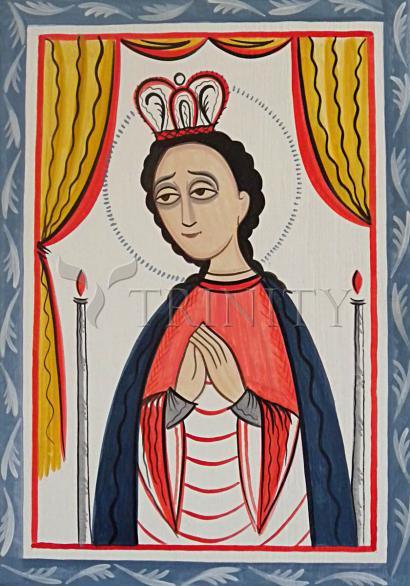The town of San Juan de los Lagos is located in the eastern part of the state of Jalisco in west central Mexico, approximately 120 kilometers northeast of Guadalajara. The shrine to Nuestra Señora de San Juan de los Lagos (Our Lady of St. John of the Lakes) is one of the principal pilgrimage sites in Mexico, perhaps second only to that of Guadalupe near Mexico City.
The story of the Virgin of San Juan begins in 1542, when the Spanish priest, Father Miguel de Bologna, brought an image of the Virgin of the Immaculate Conception to the village. Some years later,in 1623, the legend recounts that the daughter of Indian parents fell gravely ill, and her death was imminent. However, after the parents earnestly prayed to the Virgin, their daughter was saved.
As a result of this miracle, there was a steady increase in the number of pilgrims who came to the Virgin, not only Indians, but Spanish and mestizo as well. The Virgin acquired her own local identity as Our Lady of San Juan de los Lagos, separate from her original identity as the Immaculate Conception. From the early 17th century, a fair was held each year around the anniversary of the statue's installation in the shrine (November 30). This market fair increased in popularity until the middle of the 19th century, after which time attendance declined. The fair was terminated in the early 1900s, although a fiesta is still held.
Construction began on the present church in 1732. The church was built in the Mexican baroque style of the time, with an ornamented facade surrounded by the plainer lower walls of the bell towers. Although the towers were not completed until 1790, the Virgin was installed in the new church in 1769. Pope Pius XII recognized the church as a basilica in 1972. The church was elevated to the Cathedral of the Diocese of San Juan de los Lagos by Pope Paul VI.
Inside the church, the Virgin stands on a platform placed above the main altar. The platform includes an upturned crescent moon, reminiscent of the origins of the image as the Immaculate Conception. Golden candelabra adorn the altar. (In post-Vatican II style, there is an additional smaller altar placed further forward in the sanctuary.) The platform is inside a cupola supported by Ionic columns, approximately six feet in height. Above the cupola is a golden half-dome, itself supported by even larger columns. In the half-dome, two sculpted angels hold a banner over the Virgin's head with the Latin phrase, "Mater Immaculata, ora pro nobis" (Immaculate mother, pray for us). Several additional sculptures are set in the back wall of the sanctuary. To the left of the main altar is a chapel to Our Lady of Guadalupe. To the right is the ex-voto room, to be discussed below.
The statue of the Virgin of San Juan is about 20 inches tall and was constructed according to the titzingueni technique used by the Tarascan Indians of Michoacan. Thus, the statue probably derived from that area. (The current state of Michoacan is immediately to the south of Jalisco.) Vasco de Quiroga, noted churchman and bishop of Michoacan in 1537, encouraged the Indians to adapt their pre-Hispanic sculpting technique to the making of Christian images. In the indigenous technique, the sculptor prepared a paste from a mixture of corn pith and orchid juice. The paste was then molded over a frame of cane or wood, after which the figure was coated with gesso and painted. Besides the Virgin of San Juan de los Lagos, there are a few other cult statues still extant in Mexico, such as Nuestra Senora de Salud (Our Lady of Health) in Patzcuaro and the Virgin of Zapopan in Guadalajara, that were made by means of this technique.
In the late 16th or early 17th century, the Virgin's statue was "modernized," in one of the styles of the day, by enclosing her in a frame over which was draped lavish clothing. Now only the Virgin's hands, folded in prayer, and her head with long brown hair, are exposed. Over her head is placed a golden crown. At her feet is an upturned crescent moon. She wears a white gown over which is placed a blue robe, indicating her colors of blue and white. Sometimes, however, she is dressed only in white. The folded hands and crescent moon are related to her original role as the Virgin of the Immaculate Conception.
In 1836, the Pope ordered that a special room be constructed to house the votive offerings that were brought to the Virgin. This room was consecrated by the Archbishop of Guadalajara in 1884. It is located to the right of the main altar and is covered from floor to ceiling with votive paintings and other offerings.
Besides the ex-voto paintings, the votive offerings include girls' dresses and other children's clothing, religious prints, written texts, children's drawings, photographs, miniature or toy vehicles, locks of hair, and statues of the Virgin.
The ex-voto paintings typically include two parts: first, a text that states the donor's prayer to the Virgin, describes the miracle received, and offers thanks (or all three); and second, a picture of the miracle or of the donor praying before the Virgin.
There are several other shrines in Mexico at which large numbers of ex-voto paintings are offered. These include the shrine of Our lady of Guadalupe near Mexico City, the church of San Francisco de Asisi in Real de Catorce, San Luis Potosi, and the sanctuary of Santo Niino de Atocha in Fresnillo, Zacatecas. Many other churches in Mexico, and in areas of the United States where Mexican-Americans live, receive a smaller number of pilgrims who offer votive paintings and other objects.
In San Juan de los Lagos, so many ex-votos and other votive objects are offered to the Virgin, that the room at the side of the church is insufficient to contain them. Another building was constructed a couple of blocks from the church in which many more votive offerings are housed. The vast quantity of these offerings indicates the great esteem in which Nuestra Senora de San Juan de los Lagos is held by the faithful.



